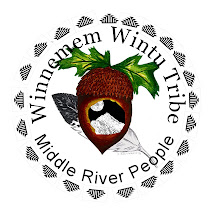Ecuador Part 4




Well, following the last supper (so to speak), Charlie, Myrna and I headed out via bus to banana country (about 175 miles south of Guayaquil). I have ridden in cabs in New York and Washington DC and let me tell you: the drivers in the north cannot carry a fix-a-flat for these vaqueros in South America. I do not think we stayed on our side of the road the entire trip for any longer than to hug the rail as approaching cars pushed our way. I saw people jumping out of the way, construction crews ducking to avoid getting a mirror to their melons, and better marksmanship that Sgt. York as the drivers we had (coming and going) hit every pothole in the road.
Bouncing along and getting one rest stop (at a company sponsored bodega along the roadway, we finally made it to Guabas and the free market banana plantation where Marcos, our guide drove us into the bush and then on foot to look at banana gathering first hand.
I have a new appreciation for the bananas we get here. It was hot in the plantation and the men and women working their labor extremely hard for the fruit many seem to think merely grow on trees. In fact, I learned that these plants are like mini water drums: the water soaks up the stalk of the plant, they grow bigger and eventually a red colored flower appears. This flower is bagged and marked with a colored strip and the folks continue on their way doing this until the plants are covered with multi-colored tags indicating how long the bananas have matured. Inside the flower are these petal that look like tiny baby bananas, and as they grow they are watched until the fruit finally gets to the familiar shape we all know from the store. The thing you don't see, is that as they grow, someone is constantly tending them, pruning them out and then finally harvesting them (after about 12 weeks). The photo of the fellow with the bunch on his shoulder is carrying about 80 kilos in weight (160 lbs?). He carried that about 50 meters to a drag line where the fruit was chained to a pulley and cable system and them drug to the sorting and washing /packing shed. The person in the white shirt of the photo above is the woman who owns this particular plantation.
In the shed area, the bananas were measured (like on the crab boats where they see if they are the right size) but in this case, if the fruit is too big (long and wide) they are tossed in a pile to the side. Seems the delicate mouths of the eaters in Europe and the US can only handle a particular size banana...crazy huh?
Anyway, I asked what happened to the ones chucked to the side (I was eating them by the way - I guess my little mouth was just right for the discards). These bananas are sent to a processor who purees them, packs the mess and ships it to Ben and Jerry's Ice Cream where it becomes...tada..Chunky Monkey Ice Cream. So the next time you enjoy a pint of that delicious desert, remember that it once lay on the jungle floor, after being lugged by a fellow half the size of you, and then, tossed aside because no one would eat it as it was too big.
The free trade farms, allowed the owners to hire permanent staff, and upwards of 50 additional staff to harvest. They did not make a fortune but it was a decent wage for their economy and was guaranteed throughout the year, so that was good. Health care, educational assistance and commods were provided to the permanent staff as well. I am taking a closer look at free trade and the implications of its application across other crops here and in South America.
Anyway, we finished, had a nice little dinner back at the hotel and I traveled home where I now finish this travelogue for you. It was fun writing this, as it brought back a lot of good memories and reminded me that I have friends south of all the borders who are just like me and you, so all is swell again.
We are heading to New Zealand next month for the Salmon ceremony on the Rakaia River. Hopefully I will have some snaps of that trip to share with you.
Labels: bananas, Ecuador, UUSC, Winnemem Wintu


<< Home